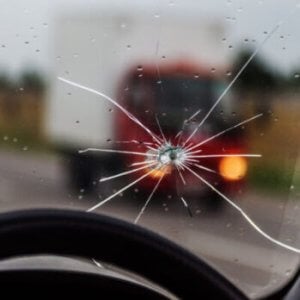Home / Compare Car Insurance / Windscreen excess in car…

Key takeaways
Windscreen excess cover isn’t available on all policies, so it’s important to shop around if it’s something you want included in your car insurance. Here’s what you need to know:
- Windscreen and window glass excess cover may reduce or waive the excess you need to pay on a claim for broken windscreens or car windows.
- Windscreen excess cover may be available on comprehensive car insurance as an optional extra or a standard inclusion.
- Third Party Fire and Theft insurance typically only covers windscreen damage in specific scenarios, while Third Party Property Damage policies might not cover window damage at all.
Tips from our car insurance expert, Adrian Taylor
Compare the Market’s car insurance expert, Adrian Taylor, has these tips for car owners looking to maintain their car insurance with windscreen excess cover.

Always read the Product Disclosure Statement
Windscreen cover may not be automatically included in your policy, but it could be offered as an optional extra. Make sure you read your policy’s PDS to understand all the details of your coverage.
Compare car insurance annually
If you want windscreen cover and don’t currently have it, comparing insurance quotes annually may be able to provide you with a policy that includes the cover you want at a price you’re comfortable with.
Update your cover when you move
When we move home, we often update our home and contents but overlook our car insurance. Where you live and park your car may impact your risk of making a claim on windscreen cover, and it’s critical you update your insurer if your details change.
The basics of windscreen cover
What is windscreen and window glass cover?
Reduced windscreen and window glass excess cover is typically an optional extra available on comprehensive car insurance policies, although it can sometimes be a standard inclusion of comprehensive cover. It lowers or completely waives the excess if you need to make a claim for damage to your car windows or windscreen.
How does windscreen cover work?
If something damages your car windscreen or window glass, repair costs are covered by car insurance, as long as the cause is listed in the policy (e.g. storm or accidental damage). Usually, you have to pay an excess when making an insurance claim – but this might be waived or reduced with windscreen excess cover.
Some providers may still charge an excess, but a lower amount than it would be without this cover. This benefit is sometimes called windscreen excess reduction. Other insurance providers offer excess-free windscreen replacement but may only do this once a year or limit it to just the front or back windscreen. This feature is generally known as excess-free windscreen replacement.
Does windscreen/window glass cover other glass in my car?
It’s important to note that window glass and windscreen cover may not cover all glass parts of your vehicle. While specific policies may differ, excess-free windscreen replacement generally applies to:
- Front windscreens
- Side windows
- Rear windows
- Window glass seals.
Those glass components which generally aren’t covered by this kind of insurance (depending on the policy and provider) can include:
- Sunroofs and moonroofs
- Headlight and indicator casing
- Side- and rear-view mirrors
- Infotainment display screens.
It’s important that you always read the relevant Product Disclosure Statement (PDS) before purchasing a policy, so you know exactly what you’re covered for as well as the policy limits, exclusions, terms and conditions. Also read the Target Market Determination (TMD) to ensure the policy is right for you.
Why should I get car insurance with windscreen cover?
There are a couple of reasons why you should consider getting windscreen cover through your car insurance policy if you aren’t already covered:
- It can be illegal to drive with a damaged windscreen in Australia (depending on the size of the damage and the laws in your state or territory).
- Small chips and cracks don’t cost much to repair, but if left unrepaired they can expand and become a much more expensive problem to fix.
- Replacing modern car windscreens that have sensors can be quite expensive, so removing or reducing the excess for those claims can be a big help.
- Adding windscreen cover to your car insurance can help take the financial stress out of repairing a damaged windscreen or car window.
Do other kinds of car insurance cover window cracks and chips?
Aside from some comprehensive car insurance policies, most other levels of policies don’t cover damage to your windscreens unless it was caused by an insured event.
For example, Third Party Fire and Theft will cover a damaged windscreen if it was caused by a fire, theft or attempted theft. However, excess reduction options generally aren’t available in this level of car insurance. Third Party Property Damage, on the other hand, may not cover your car’s window damage at all.
Your broken windscreen could also be fixed by your provider’s roadside assistance team, subject to the terms of your policy. Just keep in mind that you might not be able to make an excess free windscreen claim for this. Make sure you read the PDS and contact your provider if you have queries.
Making a claim
What should I do if my windscreen is chipped, cracked or damaged?

If your car windscreen or windows are damaged, you should contact your provider to lodge a claim. Many insurance providers have their own network of repairers they work with, and your insurer will help you organise a windscreen repairer to fix the issue.
It’s important that you act quickly when your car windscreen or windows are damaged, even if it’s just a small chip. These little chips and cracks can quickly become bigger if not repaired soon after they appear.
Is it illegal to drive with a cracked windscreen?
Cracks, chips and scratches on your windscreen may render your car unroadworthy, and it’s illegal to drive an unroadworthy car. A damaged windscreen can impede your vision and is a structural weakness, so it’s important to take swift action to ensure your car is legal and safe.
Can I choose my own repairer with windscreen and window glass cover?
Most insurance providers will use their own network of repairers, technicians and glaziers to repair or replace your car’s windscreen and windows. This means you may have no choice of repairer, or a limited choice from the insurance provider’s network.
However, some providers do let you choose your own repairer, either as standard for your policy or as an optional extra when signing up. Contact your provider to check if you can choose your glass repairer.
If I make a claim on windscreen and window glass cover, does that affect my no-claim discount (NCD)?
Generally speaking, you may lose your NCD or bonus if you make any sort of claim, even if you have the windscreen excess reduction option. However, some insurance providers may let you keep your NCD after making a claim for damaged windscreens and windows.
You can contact your provider to clarify whether this type of claim would remove your NCD or whether you can maintain your NCD after claiming with windscreen excess reduction cover.
How much is a windscreen repair?
Generally speaking, the more complex your windscreen, the more expensive it will be to repair if it’s chipped or broken. However, the cost of a windscreen repair can vary depending on numerous factors, including:
- Your location
- Car make and model
- Glass type and brand
- Advance Driver Assistance (ADAS) technology
- Repairer costs
- Warranty status
- Insurance level.
For a better idea of how much it’ll cost to repair your car’s windscreen, it’s worth getting a quote from a windscreen repair professional.
What if I don’t have windscreen and window glass cover?
You might have some different options available to you if your windscreen gets chipped and needs repairs.
If multiple areas of your car are damaged by an insured event (e.g. accident or fire), in addition to the windscreen, you can lodge a car insurance claim as normal and pay just the basic excess. Excess-free windscreen claims are mostly only available when it’s just the windscreen or windows that are damaged.
If the damage wasn’t caused by an insured event, you have the option to organise and pay for repairs out of pocket instead of lodging an insurance claim. You can still make a claim if you want, but if it’s accepted, you’ll have to pay the full excess applicable to your policy if you don’t have windscreen excess cover.
Meet our car insurance expert, Adrian Taylor
As a General Insurance expert with over 13 years’ experience in financial services, Adrian Taylor is passionate about demystifying car insurance for consumers, so they have a better understanding of what they’re covered for. Adrian’s goal is to make more information available from more insurers, to make it easier to compare and save.


